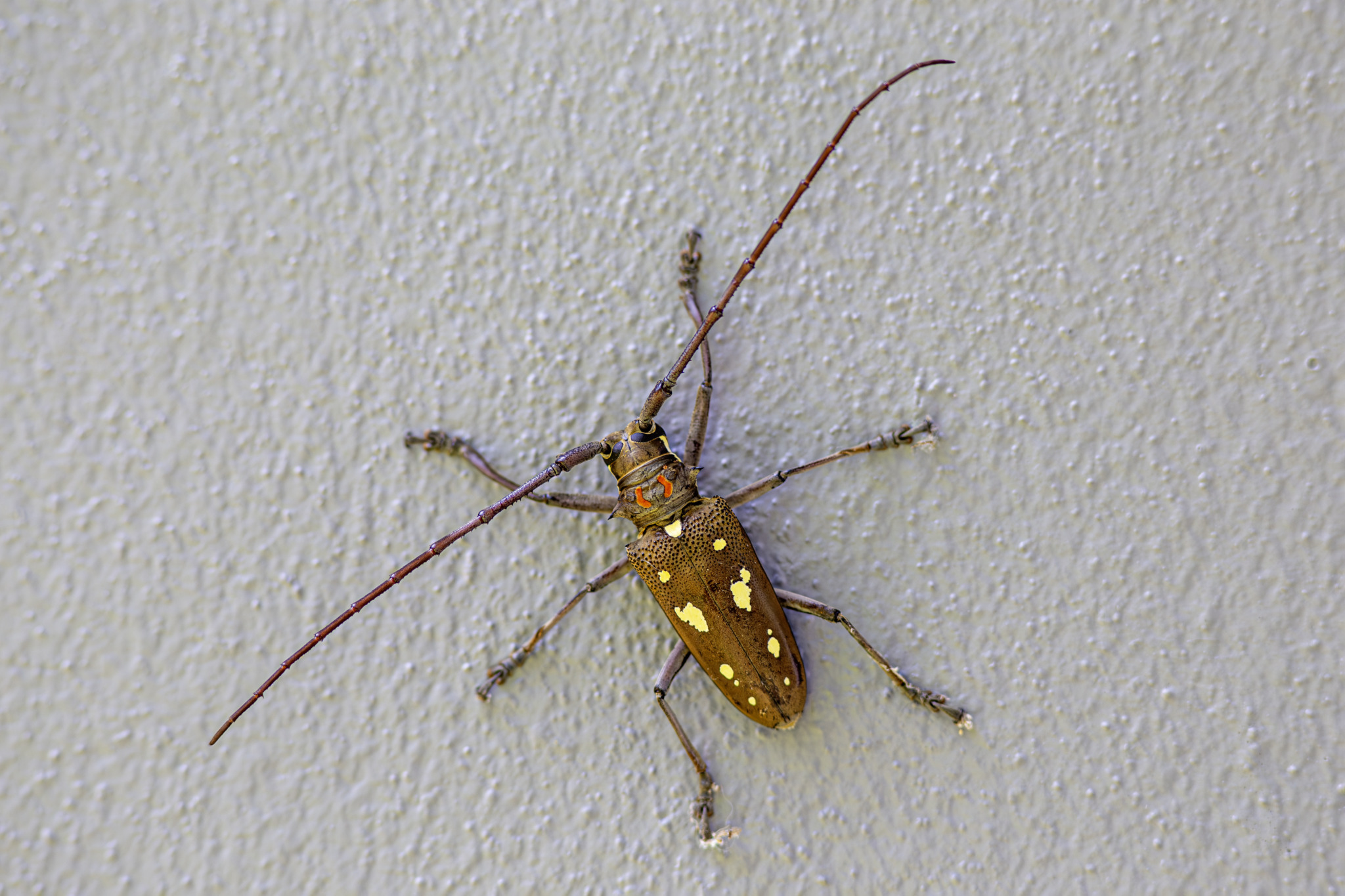The Rubber Root Borer (Batocera rubus) is a species of longhorn beetle belonging to the family Cerambycidae. Here are some key features and characteristics of the Rubber Root Borer:
- Appearance: Rubber Root Borers are relatively large beetles, with adults typically measuring between 20 to 40 millimeters (0.8 to 1.6 inches) in length. They have elongated bodies and long antennae, which are often as long as or longer than their bodies. Their coloration varies but often includes shades of brown, black, and gray, sometimes with mottled or striped patterns.
- Habitat: Rubber Root Borers are found in tropical and subtropical regions of Asia, particularly in countries such as India, Indonesia, Malaysia, Thailand, and Vietnam. They inhabit forests, plantations, and other wooded areas where their host plants grow.
- Host Plants: The larvae of Rubber Root Borers feed on the roots of various trees and shrubs, including rubber trees (Hevea brasiliensis), which are widely cultivated for their latex production. Other host plants may include fruit trees, hardwood trees, and ornamental plants.
- Lifecycle: The lifecycle of Rubber Root Borers typically begins when adult females lay eggs near the base of host plants or in soil containing suitable roots. The larvae hatch from the eggs and tunnel into the roots, where they feed and develop for several months to several years, depending on environmental conditions and the availability of resources. After completing their larval stage, the beetles pupate in the soil before emerging as adults.
- Feeding Behavior: Rubber Root Borer larvae are wood-borers and feed primarily on the inner tissues of roots, causing damage to the vascular system of host plants. This feeding activity can weaken the host plants, leading to reduced growth, susceptibility to disease, and even plant mortality in severe cases.
- Adult Behavior: Adult Rubber Root Borers are primarily nocturnal and are attracted to lights at night. They may also feed on sap, nectar, or plant juices, although their primary purpose as adults is to mate and reproduce.
- Economic Impact: Rubber Root Borers are considered pests in rubber plantations and other agricultural settings, where they can cause significant damage to host plants and reduce crop yields. Control measures for these beetles may include the use of chemical insecticides, cultural practices, or biological control agents, depending on the specific circumstances.
Overall, Rubber Root Borers are important pests in certain regions, particularly in areas where rubber cultivation is widespread. Their feeding habits and lifecycle can have significant implications for agricultural productivity and the health of host plants. Therefore, management strategies aimed at reducing their impact are important for maintaining the sustainability of affected ecosystems and industries.
Visited 202 times, 24 visit(s) today
Views: 307
Subscribe to the newsletter:
